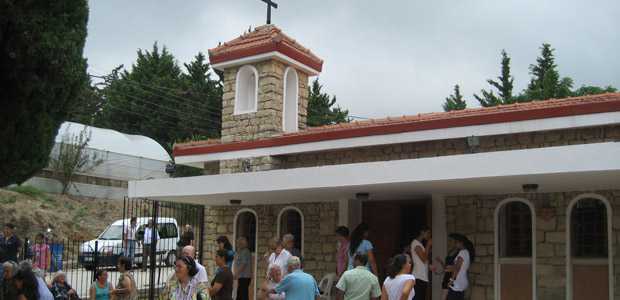
For the Geo Quiz we are looking for a province in southern Turkey about the size of Delaware.
The province used to be part of Syria once, but was ceded to Turkey in 1939.
It is an ethically diverse province and even includes a village with a 100 percent ethnic Armenian population.
The capital of the province is the city of Antakya.
Hatay is the answer to the Geo Quiz.
Hatay is home to the only village in Turkey that is populated solely by ethnic Armenians considering that most ethnic Armenians, in what was then the Ottoman empire, fled or were killed or ethnically cleansed in 1915.
Reporter Matthew Brunwasser paid the village a visit.
Bitterness over the 1915 Armenian massacres and ethnic cleansing in Turkey by then Ottoman forces is still unresolved. But Turkey’s last remaining village inhabited solely by ethnic Armenians is a seriously peaceful place. Vafikli Koyu today attracts visitors with its pretty views, excellent climate and tasty organic produce.
It’s a balmy Sunday in Vakifli Koyu, a sleepy village on a lush mountaintop overlooking the Mediterranean. The air smells like orange blossoms and the townsfolk, all 135 of them, never seem to hurry.
It feels like it could be any Sunday from over the centuries, as services start at the St. Astvatzatzin Armenian Apostolic Church. But today there is big news. The village has a new resident priest for the first time in 11 years. And today is his first service.
Father Avedis Tabashyan was born and raised nearby. He is 31 and excited about his new job.
“I think more worshipers will come to church because there will be regular services,” says Tabashyan. “The spiritual life of the people will improve because they have a priest now with whom they can share their problems.”
The village looks and feels more prosperous than its neighbors – largely due to the money sent by family members working abroad. There is also innovation here. The village was one of the first in Turkey to start growing organic oranges in 2004. Tabashyan says most of the young people have left and the remaining villagers have realistic expectations.
“Agriculture doesn’t bring us much money so the population will continue to shrink,” he says. But even if there are only 50 people left in the village, there will still be Armenians here. And whenever there is a holiday those who have left will always remember the village and many will come back.
The village has a special history. In 1915, locals say, Armenians from the area held off Ottoman Turkish forces for 53 days. They signalled a passing French warship by hanging a banner on the mountaintop and were rescued. When the province became part of Turkey in 1939, only the residents of Vakifli Koyu decided to return. Today, villager Stepanos Chaparyan says they’ve mixed in nicely with their Muslim Turkish neighbors.
“There’s a little difference, but our traditions are very similar,” Chaparyan says. “We go to each others villages for weddings and religious festivals and there’s no problems at all.”
The village is tranquil. The runoff from village farms flows down steep stone steps, carved into the mountainside along the village’s streets.
It’s also a small village. Taking a short walk, I run into Chaparyan again, sitting on a bench and playing a wooden folk flute.
The song he’s playing is emblematic of the painful relations between Turks and Armenians, sari gelin or “blond bride” in Turkish.
“Sari gelin, sari” says Chaparyan. “It’s a song both Turks and Armenians share. The real meaning in Armenian is ‘mountain bride.’”
A documentary film using the name of the song, produced by Turks, promotes the Turkish nationalist perspective that Armenians were in fact the aggressors in the bloody events of 1915. But the people of Vakifli Koyu can’t be bothered. They’re more concerned about business.
Gohar Kartun is selling jars of locally grown and prepared food products to the crowds of Sunday tourists who like to shop here.
Kartun says that visitors come with a wide range of expectations. She says many Turks have never met an Armenian before and their curiosity can make her feel like she’s in a zoo.
“Sometimes, sometimes,” Kartun says. “It depends on the questions they are asking. Not everyone looks through the same window. Some of them say, ‘we are so happy to see Armenians in our Turkey.’ They want to come and see what kind of creatures we are.”
Kartun says that tourism is one economic bright spot for Vakifli Koyu. The main attraction in the Hatay region is the nearby ancient city of Antakya, Antioch in the bible. The province also has one of Turkey’s most multi-cultural populations, including Turks, Arabs, Christians of various denominations, Alevi and Sunni Muslims.
“Hatay is a rainbow and we are one of the colors. And I’m trying to show it to the world, ” Kartun says.
As Turkey matures politically and moves away from the ethnic nationalism of its founders, minorities like Armenians hope that Turks learn to appreciate diversity. Locals want people to think of Vakifli Koyu as nothing more than a place for a relaxing weekend stroll.

Leave a Reply